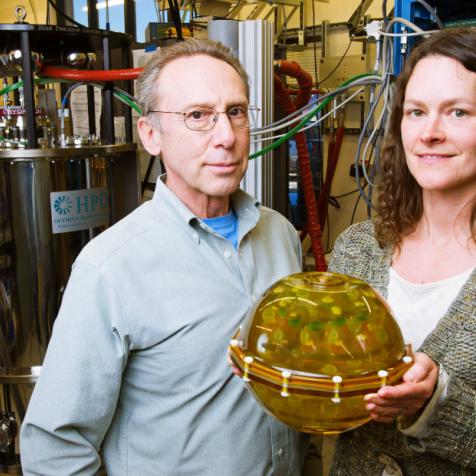
Company Details
Location
Boulder, Colorado
Founded
1993
Ownership Type
Private
Employees
25
Products
MRI technology, precision cryogenics, water-flowing optical power meters, environmental monitors
Boulder, Colorado
Founded: 1993
Privately owned
Employees: 25
Bill Hollander and Elizabeth Mirowski have a target of quadrupling sales in five years thanks to a new product line that could revolutionize MRIs.
Founded by Hollander with a small cosigned line of credit and a few thousand dollars in cash, High Precision Devices began with 2,000 square feet, two employees, and a commission to design and fabricate a cryogenic test probe for the National Institute of Standards and Technology (NIST) in Boulder.
In the years since, the company has expanded into a 10,000-square-foot manufacturing facility and completed more than 1,800 projects for government and university laboratories and private companies in numerous industries.

It's also poised to change the face of medicine as we know it. Developed in cooperation with scientists at NIST, and funded primarily by grants from the Small Business Innovation Research (SBIR) program, High Precision Devices' new qMRI phantom product line will alter the way MRI images are used in research and clinical trials (now) and patient healthcare (in the future).
"Currently, images acquired by MRI are grayscale pictures that are interpreted qualitatively," explains Elizabeth Mirowski, Ph.D., technology development specialist. "For example, at one facility, the doctor can ask the MRI tech to tweak the parameters to achieve a grayscale image to interpret. At another site, those parameters may be different and yield a different looking image, which can lead to a different diagnosis. The phantoms we are making are tools that will be used to standardize MRI image acquisition across time and across sites."

Use of the phantoms will ensure repeat images of a particular patient can be compared as well as reduce errors in measurement to allow the aggregation and comparison of data across multi-site clinical trials. Eventually, High Precision Devices' MRI phantoms will lead to the development of new diagnostic protocols, such as widespread use of qMRI to detect cancerous from non-cancerous cells in the body or to detect pre-stroke areas in the brain.
The company currently produces three phantoms: the System phantom containing different concentrations of chemicals to mimic human physiology and used for general calibration and standardization, Diffusion phantom designed to standardize the measurement of water diffusion in the human body, and Breast phantom. "That one will be used in clinical trials specifically for monitoring neoadjuvant chemotherapy and how well it's working to reduce the size of a breast cancer tumor," adds Mirowski.

Full adoption of the qMRI phantoms by hospitals and other healthcare facilities is years away. "We need researchers to prove that MRIs can track biomarkers of disease," Mirowski says. "But once those clinical trials start to have outcomes, the information can then be transferred to hospitals and institutions doing routine diagnostics. At that point, the product will move into the general population."
How large is that population? According to Hollander, while there are only about 1,000 MRI scanners in use at research institutions such as the Mayo Clinic, Massachusetts General Hospital and Washington University in St. Louis, "There are close to 30,000 MRI scanners out in the world. It's our hope that in the next three to five years, we'll be selling our qMRI phantoms actively to that much larger pool of scanners worldwide."
While High Precision Devices' 2015 revenues of nearly $6 million were a healthy 15 percent higher than the previous year, Hollander forecasts sales of the qMRI phantoms alone will quadruple the company's sales by 2021.

Challenges: Managing growth is a daily challenge for Hollander and his team. "We have a bunch of different projects going at different stages of development," he explains. "So as we get more activity in different product areas such as our qMRI phantoms, we have to increase our capability to manufacture them, refine our systems to allow us to do them cost effectively and under appropriate controls, and be able to track our results."
Opportunities: "Right now, we're at the forefront of a new technology that many people in the industry are really excited about," says Mirowski. "We're definitely looking at exhibiting our phantom product line at the International Society for Magnetic Resonance in Medicine as well as building relationships with the major MRI scanner vendors such as GE, Siemens, Philips, and Toshiba. We'll then use those relationships to target more clinical research customers with multisite clinical trials to generate more sales. That's our goal for 2016."

Needs: "If we're eventually going to be cranking out these phantoms at the rate I anticipate, we're going to need far more room than we have now," says Hollander. "We're already beginning to look around for more space, and we're going to need more people as well. And while we try to fund these expansions out of our pocket and our customers' pockets, we may need to look for outside investment at some point. That might be necessary to successfully pull this off if we need to grow faster than we can by just self-funding."
